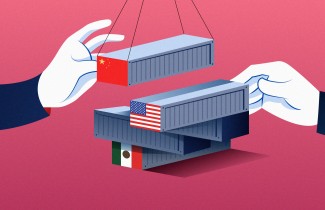Is the Mexican States Public Debt Sustainable?
State public debt has grown over the past few years, compromising the fiscal balance with a reduced economic dynamism

Since the last financial crisis (2008-2009), some of the world’s economies became increasingly concerned about maintaining fiscal discipline, particularly in countries where public debt had become unsustainable. In Europe, several economies received bailouts and were placed under scrutiny by multinational organizations to control their public spending. When governments follow unsustainable fiscal policies, they jeopardize public services, the safety of the financial system, and, ultimately, the country's international creditworthiness and macroeconomic stability.
Since then, many studies have proposed assessing the sustainability of public finances, but mostly in developed economies and at the national level. This has resulted in a knowledge gap regarding how to assure the sustainability of governments’ public debt at the subnational level, especially in emerging countries.
In order to assess the public finances of Mexico’s 32 states, over the past seven years, we conducted a study that was recently published in the journal Regional and Federal Studies, coauthored with Dr. Fausto Hernández, CIDE, and Ernesto del Castillo, Ph.D. in Business Administration student, at EGADE Business School.
Titled “The Sustainability of subnational public debt: Evidence from Mexican states”, this paper evaluates the public finances of Mexico’s 32 states from 1993 to 2016, measuring each state’s debt and fiscal surplus in relation to their GDP. Fiscal sustainability will depend on the size of the debt-to-GDP ratio.
Sustainable but deteriorated debt
Our findings confirm that Mexican states maintain their fiscal sustainability. Nevertheless, their finances have deteriorated over the past few years due to a less strict fiscal policy. Public finances were dealt a severe blow by the global financial crisis, an effect we have been able to see clearly since 2008, although it is not the first time this has happened. We must recall that devaluation of the Mexican peso in 1994, and the subsequent economic crisis in 1995 led to a bailout of 28 of the 32 states by the federal government.
In 1997, a new regulatory framework forced states wishing to issue debt to have been evaluated by at least two international rating agencies (Moody’s, Standard and Poor’s, or Fitch). However, in 2001, the states began to issue debt instruments that rose from 90 million to 35 billion Mexican pesos in 2007 (CEFP, 2009).
Compromised finances in some states
Our research measures state debt in two ways: the debt-to-GDP ratio and the debt to guaranteed resources ratio (own revenue plus federal transfers). Credit rating agencies use the latter indicator to analyze the capacity of states to acquire additional debt and have been employed to assess the sustainability of subnational public debt.
By this measure, the most indebted states are Chihuahua, Coahuila, Nuevo Leon, and Quintana Roo, with a debt that surpasses their guaranteed resources. The states that border with the United States appear to display a tendency for higher indebtedness.
Between 2006 and 2016, both debt indicators more than doubled: the debt-to-GDP ratio rose from 1.2% to 2.6%, while the debt to guaranteed resources ratio jumped from 24.4% to 48.9%. States with the most sustainable debt were Querétaro, Tlaxcala, and Campeche.
In addition, we found that the finances of states that are smaller, with greater financial openness, and a less dynamic economy, were the most severely compromised.
Our research findings suggest that state governments’ lack of fiscal discipline is jeopardizing the long-term sustainability of their debt.



